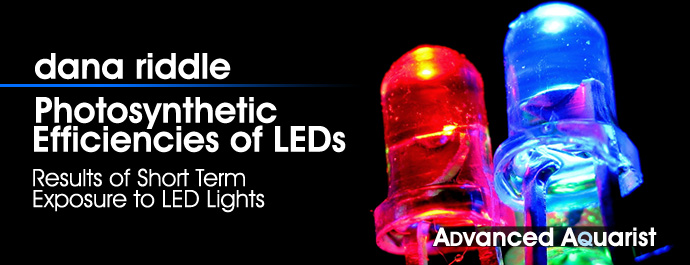Hey all, this is a subject that I have been very interested in. I would like to get @Dana Riddle 's opinion on this as well as everyone else.
Fairly recent studies suggest that green light has a greater impact on photosynthesis in terrestrial plants than previously thought. Because it is not quickly absorbed at the surface of the leaf (like red and blue light), the green light can penetrate deeper into the leaf, driving photosynthesis in deeper layers of the leaf.

There is also the fact that green light penetrates fairly deep in the ocean, along with blue light.

I was wondering if increasing the amount of green light output from our light fixtures could lead to more photosynthesis deeper in the coral tissue, leading to a faster growing and healthier coral?
As for red light. I know that there are multiple studies that suggest that red light can cause photoinhibition in coral. Although in these studies, the red light that was used, was provided at the same intensity as the blue light provided. In many LED fixtures, the maximum red light output is nowhere near the strength of the blue light output.
So my question about red light is: is there an "optimal" ratio of red to blue light that could increase photosynthesis without causing photoinhibition?
The reason I am wondering this is because of the Emerson effect. I know that this applies to terrestrial plants, but could it, to some extent, apply to coral? Could a small amount of red and far red light increase photosynthesis in coral?

Fairly recent studies suggest that green light has a greater impact on photosynthesis in terrestrial plants than previously thought. Because it is not quickly absorbed at the surface of the leaf (like red and blue light), the green light can penetrate deeper into the leaf, driving photosynthesis in deeper layers of the leaf.
There is also the fact that green light penetrates fairly deep in the ocean, along with blue light.
I was wondering if increasing the amount of green light output from our light fixtures could lead to more photosynthesis deeper in the coral tissue, leading to a faster growing and healthier coral?
As for red light. I know that there are multiple studies that suggest that red light can cause photoinhibition in coral. Although in these studies, the red light that was used, was provided at the same intensity as the blue light provided. In many LED fixtures, the maximum red light output is nowhere near the strength of the blue light output.
So my question about red light is: is there an "optimal" ratio of red to blue light that could increase photosynthesis without causing photoinhibition?
The reason I am wondering this is because of the Emerson effect. I know that this applies to terrestrial plants, but could it, to some extent, apply to coral? Could a small amount of red and far red light increase photosynthesis in coral?



















